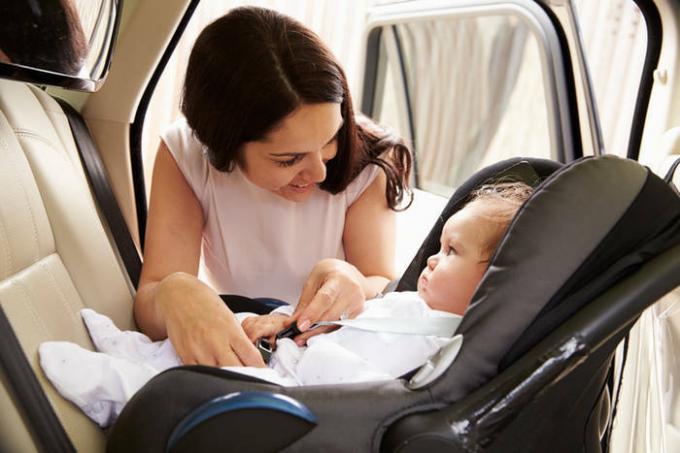How can you increase the range in an electric vehicle? We remove excess from the car, monitor tire pressure, brake correctly and clearly plan trips
Electric cars are considered one of the best modes of transport for mothers with children. They are environmentally friendly and easy to use. But most importantly, when traveling around the city, they cost the owner less than a car with gasoline. A full charge of an electric vehicle, which provides an average range of 350-500 km, will cost about UAH 160 (from a home socket). In a gasoline car, 30-40 liters of fuel are consumed for the same mileage, or about UAH 900 in monetary terms.
However, there is a big problem in the use of electric cars, which often catches owners by surprise. If the battery power runs out, it is often problematic to "feed" the car even in the city (not to mention the highway). Not all gas stations have charging points for eco-cars. And the time for the car to charge at least half, you need at least 30-40 minutes.
If you're in no hurry, this is a great opportunity to have a cup of coffee and surf social media. But if you need to pick up your child from school, in the car
baby is torn from screaming, and a ballroom dancing lesson will begin in 15 minutes - you will inevitably envy the owners of a gas-powered car.To avoid force majeure and not curse your economical iron horse, be sure to monitor the battery charge and the remaining power reserve. And also adopt some simple but very effective techniques that will allow you to significantly increase the range of an electric vehicle.
1. Smooth start
It is unlikely that a mother and children in the car will recklessly and squeeze the gas pedal at the start. However, the rush often makes us forget about the rules of sustainable driving. Before you set off, remember that a car spends a lot of energy resource for a sharp acceleration. On average, the cruising range is reduced by 3-5 km.

It is especially important for mom to drive smoothly / istockphoto.com
2. Uniform travel speed
The fewer sharp movements you have along the entire journey, the more precious kilometers you will have in reserve. Acceleration, braking, emergency adjustments and sharp turns - all this also "eats up" the battery life. In almost every electric vehicle, there is a special scale on the dashboard, which shows whether your driving style fits into the economy indicators. Keep track of this scale and try to move at a measured pace.
3. Regenerative braking
All electric vehicles have a regenerative braking option (sometimes you need to enable it yourself in the additional auto settings). This is a great opportunity not to spend, but, on the contrary, to accumulate energy. In short: during braking, the power unit of the electric car is disconnected from the battery and goes into generator mode, independently generating energy. This energy not only provides the braking torque, but also enters the battery, increasing its charge. So regenerative braking also recharges the car's battery.
4. Intelligent vehicle heating
This advice is relevant for the autumn-winter period. It is no secret that an enormous amount of energy is spent on heating a car. There is no need to completely remove this option: even a mother is uncomfortable in a cold car, not to mention the children. However, electric vehicles have such a feature as local heating of the seats and steering wheel. As a rule, in autumn this is quite enough to maintain a normal temperature in the car, and not to steam in it, as in a sauna. In addition, you can reduce the consumption of thermal energy in the morning, while the car is warming up before leaving. Warm up the car without disconnecting it from charging.

Dress your child a little warmer and turn down the heating of the car / istockphoto.com
5. Competent interior cooling
Summertime tip similar to the previous one. Not only the heating system, but also the air conditioner in the car "eats" a huge amount of precious energy. If you want to save power reserve, turn it on as little as possible. For example, in the city at low speeds it is quite possible to make a "competent" draft in the car.
6. Regular wheel check
How correctly inflated your wheels not only affects safety on the road, but also energy consumption while driving. According to statistics, approximately 25% of drivers (especially those who inflate the wheels themselves) maintain the wrong tire pressure. With under-pumped wheels, the "appetite" of the car increases, and the battery runs out faster. With inflated wheels, the car consumes less energy, but the tires wear out much faster.
7. Refusal of unnecessary things

There should be few toys and things "in reserve" in the car / istockphoto.com
All mothers know that there can be nothing superfluous in a car with children. Ten rattles, a portable mobile, a month's supply of juice and bagels, two blankets and a full package of diapers are all the minimum necessary for traveling with children. Jokes aside: the extra mass increases the power consumption of an electric vehicle. Therefore, try to put only what will be needed on each specific trip.
8. Minimum tuning
Some women really like the cute eyelashes on their car headlights. Someone, on the contrary, loves an aggressive look and screws a spoiler to the car. Well, someone does not like tuning "for beauty", but at the same time, just in case, attaches a trunk to the roof. Please note that any additional accessory increases the weight of the car and degrades its aerodynamic characteristics. This has a negative effect on energy consumption while driving.
9. Clear travel plan

Plan your trips carefully and stick to the plan / istockphoto.com
Each car owner can, plus or minus, calculate exactly how many kilometers his iron horse will last. Proceeding from this, it is possible to build an optimal route and perform the intended tasks "in the direction of travel". Try to stick to your trip plan and avoid spontaneous decisions: for example, on the way home, take your child to a trampoline park on the other side of the city. To save energy, avoid high-traffic areas when making your plan. movement: for an electric car, it is better to stretch in a traffic jam than to rebuild 10 times, brake sharply and start.
10. Correct car charging
Time your vehicle's charging time so that you can hit the road with a full battery. At the same time, it is good to unplug it from the mains just before the trip. If you charged the car at night, disconnected it from the mains in the morning, and got out on the road only in the evening - keep in mind that during the idle time the car has partially lost its charge. For "short" trips, this is not critical, but if you need to drive the mileage "end-to-end" in the power reserve, the car's resource may not be enough for a couple of kilometers.
You will also be interested to read:
How to train a child to use a car seat: advice for cars
15 life hacks for car trips every mom should know about




